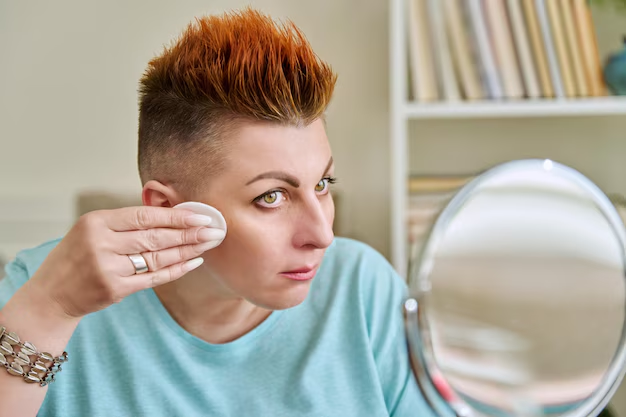Understanding Vitiligo: Does It Spread?
Imagine waking up one day to notice a small, lighter patch of skin that wasn't there before. This is a common experience for people with vitiligo, a skin condition characterized by a loss of pigmentation in patches of skin. This raises a common concern: Does vitiligo spread, and what does that mean for those affected? If you or someone you care about is dealing with vitiligo, this question might loom large in your mind. Let’s delve into this topic comprehensively, exploring what you need to know about the progression of vitiligo and what factors might influence its spread.
What is Vitiligo?
Vitiligo is a chronic skin condition where pigment-producing cells known as melanocytes are destroyed or stop functioning. The result is a progressive loss of skin color in patches. This can occur anywhere on the body, including the face, hair, eyes, and inside the mouth. The exact cause of vitiligo is unknown, but it's understood to be an autoimmune condition, where the immune system mistakenly attacks and destroys the body's melanocytes.
Types of Vitiligo
Understanding whether vitiligo will spread can depend on the type you're dealing with. There are two main types:
Non-segmental Vitiligo (NSV): This is the most common form, where patches appear symmetrically on both sides of the body. It often progresses slowly and unpredictably.
Segmental Vitiligo (SV): This type usually starts at a younger age and affects only one part of the body. It tends to have a rapid onset but then stabilizes after a year or so.
Does Vitiligo Spread?
The simple answer is: It can. For many people, vitiligo starts as a small patch that may indeed spread to other areas of the skin. However, the pattern of how it spreads is unpredictable.
Factors Influencing the Spread
- Genetic Predisposition: Those with a family history of vitiligo may experience a broader spread.
- Autoimmune Activity: Individuals with other autoimmune diseases may see their vitiligo spread more quickly.
- Stress and Trauma: Emotional stress or physical trauma to the skin (like a sunburn) can trigger or exacerbate the spread of vitiligo.
- Rapid Progression Phase: Some patients experience a period where the condition spreads rapidly before it stabilizes.
Case Variations
While some individuals experience a patchy spread over the years, others might see rapid changes in weeks or months. Conversely, some may have vitiligo stabilize early on with no further progress. The unpredictable nature of vitiligo can be challenging, but understanding the factors at play can be empowering.
Addressing Concerns and Myths
Myth: Vitiligo is Contagious
Fact: Vitiligo is not contagious. It cannot be transferred through physical contact, making it safe for individuals with vitiligo to engage in social activities without spreading the condition to others.
Myth: Lifestyle Changes Prevent Spread
Fact: While a healthy lifestyle can support overall immune health, there is no proven diet or lifestyle change that can stop vitiligo from spreading. It's crucial, however, for individuals with vitiligo to protect their skin from trauma and sun damage, which could exacerbate the condition.
Living with Vitiligo
Having vitiligo can significantly impact one’s self-esteem and social interactions. It's essential to cultivate a supportive environment and seek communities that uplift and share personal experiences.
Emotional and Psychological Impact
Support groups and counseling can provide significant relief. Whether through sharing coping strategies or simply connecting with others who understand, the emotional support network can be a valuable asset.
Practical Skin Care Tips
- Sun Protection: Use broad-spectrum sunscreen to protect against sunburn and decrease contrast between affected and unaffected skin.
- Hydration and Moisturization: Keeping the skin moisturized can enhance comfort and protect against more irritation.
- Camouflage Makeup: Some individuals use makeup or self-tanners to even out their skin tone.
Exploring Treatment Options
It’s important to note that there is currently no cure for vitiligo. However, several treatments can help manage the condition, aiming to reduce its spread and restore some pigmentation:
- Topical Steroids: These can help regrow pigmentation in some cases, but long-term use must be managed carefully.
- Phototherapy: UV light treatments can stimulate melanocytes to produce pigment again.
- Surgical Procedures: Skin grafting and tattooing are options for small areas.
- Depigmentation: For widespread cases, depigmentation of unaffected skin can create a more uniform appearance.
Scientific Insights and Future Research
Research into vitiligo is ongoing, with studies examining the genetic and immunological aspects of the condition. Novel therapies aim to target the autoimmune response more specifically, promising hope for more effective treatments in the future.
Creating Awareness and Acceptance
Fostering awareness and acceptance of vitiligo is essential for social integration and reducing stigma. Public figures and campaigns that normalize the appearance of vitiligo can create a more inclusive discourse around the condition.
Wrapping Up with Empowerment
Living with vitiligo is undeniably challenging, but understanding the condition helps in embracing it with resilience. It's vital to focus on nurturing self-love and acceptance while staying informed about new treatments and support networks. Although the spread of vitiligo can be unpredictable, the journey is uniquely personal, and finding what works for you is key.
📝 Quick Summary
- Vitiligo Types: Non-segmental (widespread) and segmental (localized) vitiligo.
- Potential Spread: Can spread, influenced by genetics, stress, and autoimmune activity.
- Coping Strategies: Sun protection, emotional support, and skin care.
- Treatment Options: Include topical steroids, phototherapy, and depigmentation.
- Awareness Goals: Promote understanding and acceptance 🌟.
